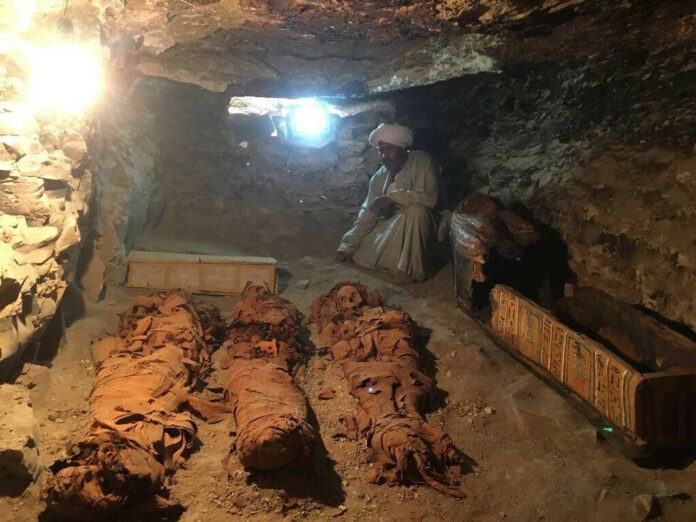A Glimpse into Ancient Egyptian Life at Gebel el-Silsila
The Watery Grave: A Unique Archaeological Find
In a groundbreaking discovery, archaeologists have unearthed a 3,500-year-old tomb at the ancient quarry site of Gebel el-Silsila in Upper Egypt. This extraordinary find, described as a “watery grave,” contains the remains of 50 to 60 ancient Egyptians. Located at the bottom of a 16.5-foot-deep shaft, the tomb consists of two chambers filled with briny water from a natural spring.
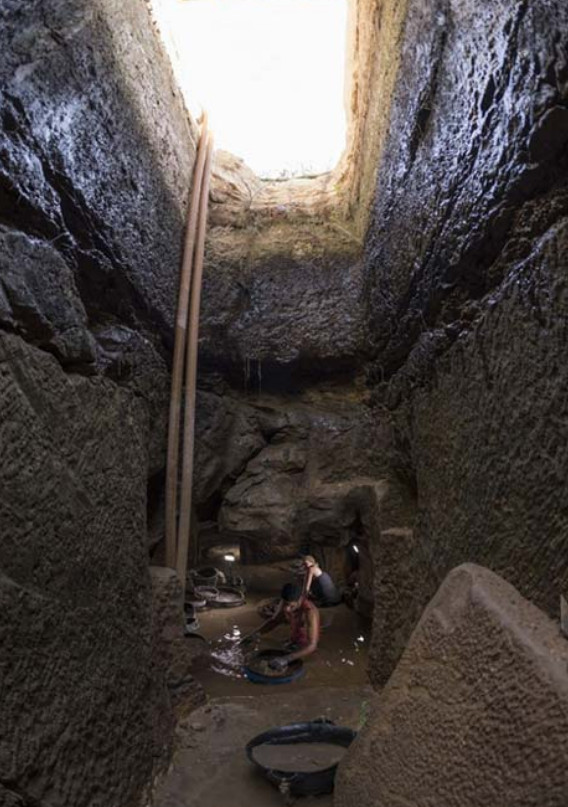
Challenges and Excitement in Excavation
The excavation team, led by Dr. Maria Nilsson, faces unique challenges due to the waterlogged conditions. John Ward, the assistant mission director, humorously describes their work as “sitting in this soup… of human remains.” Despite these difficulties, the team remains enthusiastic, with Ward likening each day of discovery to “Christmas.”

Insights into Ancient Egyptian Society
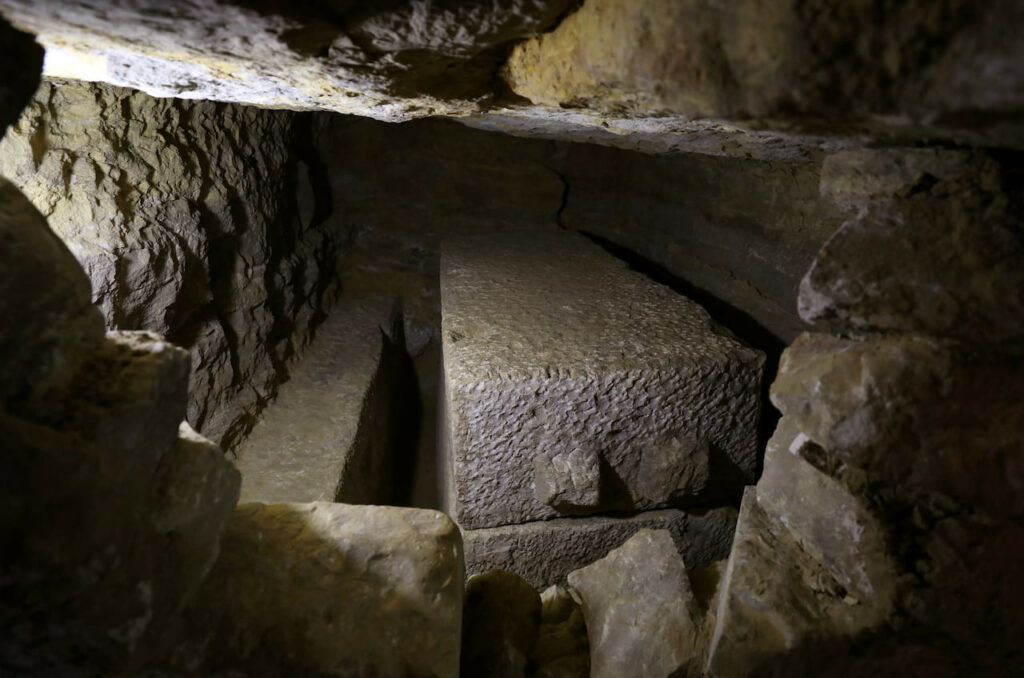
This tomb provides valuable insights into the lives of quarry workers and their families during the 18th Dynasty. The presence of women and children suggests a complete society living and working in ancient Kheny. Interestingly, evidence of broken bones and back problems in adult males indicates the harsh working conditions in the quarry.
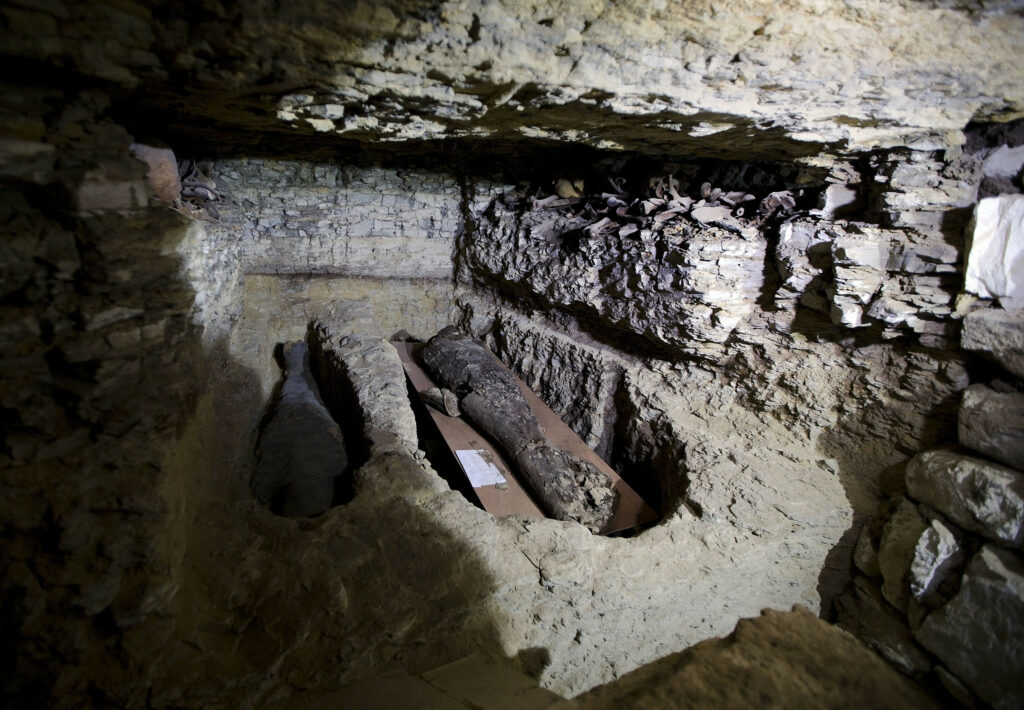
Challenging Preconceptions about Ancient Egyptian Workers
The discovery of amulets and shabtis (figurines used as manual laborers in the afterlife) challenges the notion that all construction workers in ancient Egypt were slaves. This finding aligns with Dr. Nilsson’s research focus on exploring the lives of workers rather than just the elite.
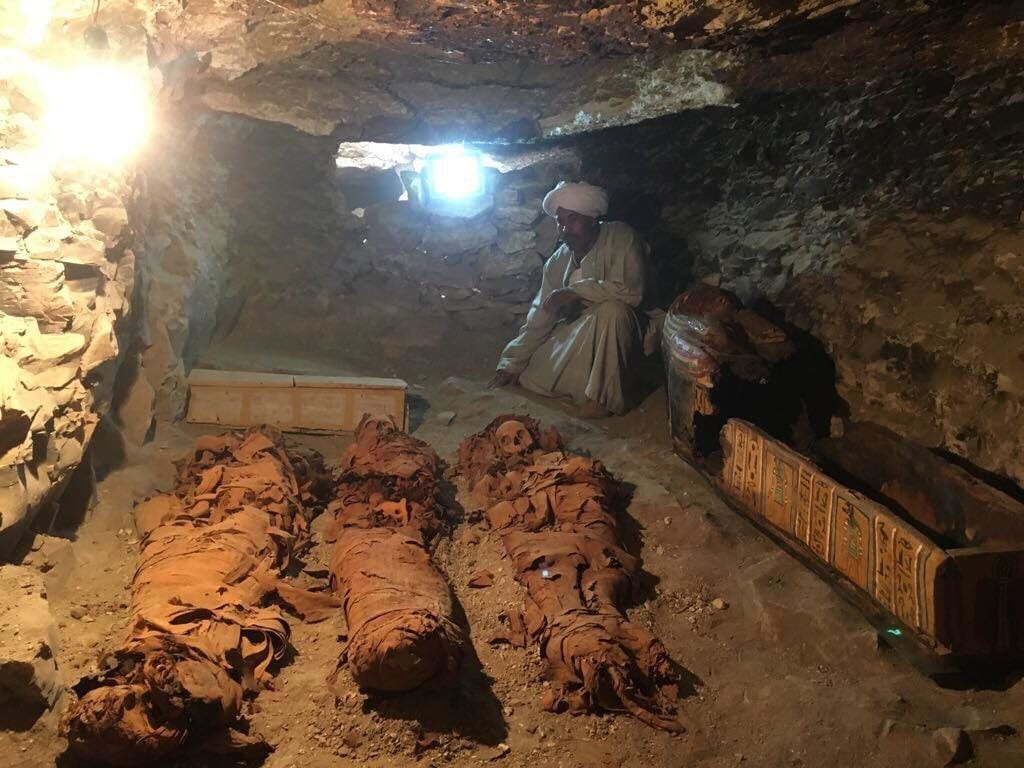
Ongoing Excavations and Future Discoveries

As the team continues to explore the tomb, including an inaccessible second chamber and a third sarcophagus, more secrets of this ancient site are expected to be revealed. The Gebel el-Silsila excavation promises to shed further light on Egypt’s rich history and the diverse roles played by individuals in shaping the ancient world.
